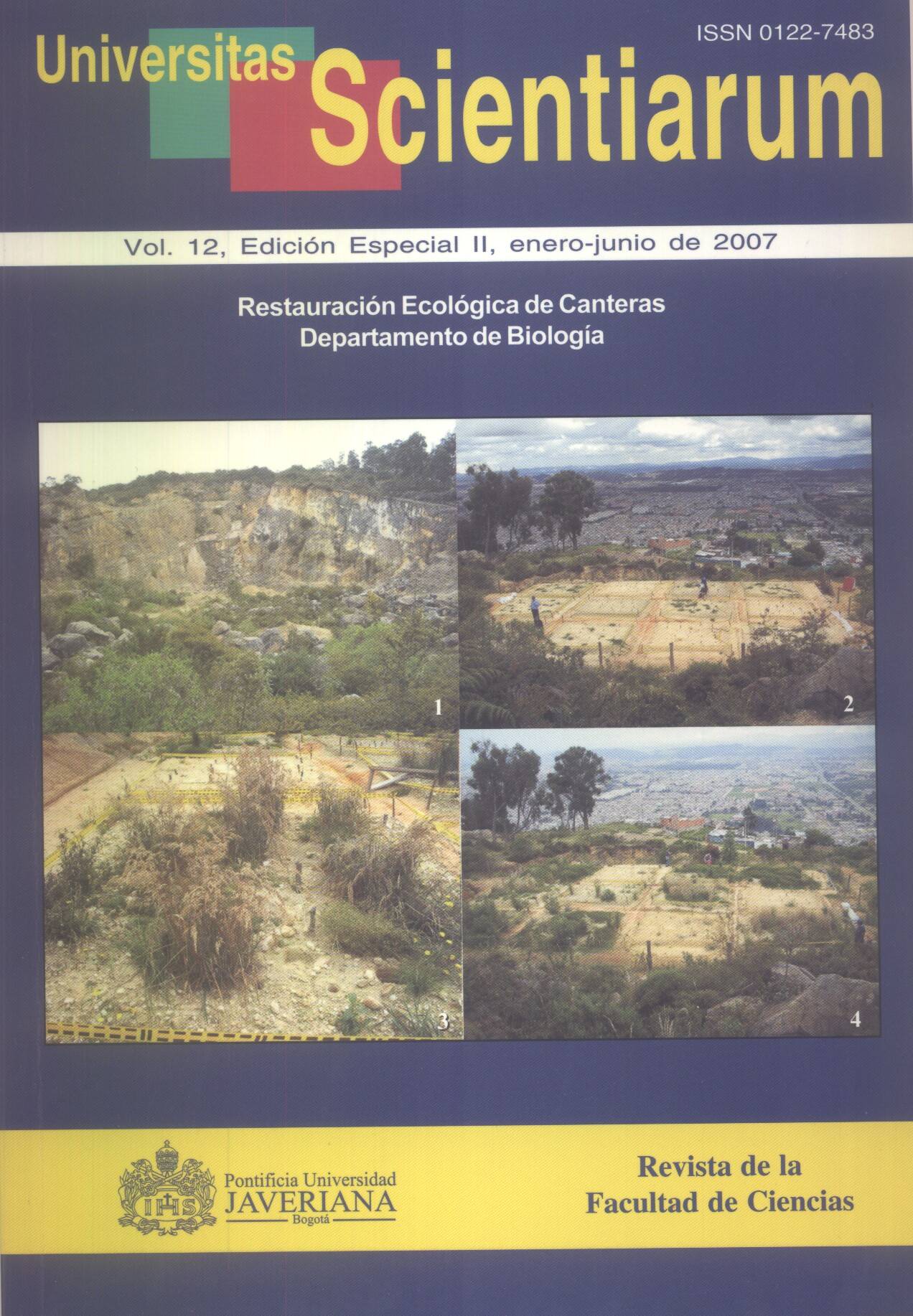Abstract
Se realizó la caracterización florística y estructural de la vegetación en tres áreas con diferente condición de abandono y dos fragmentos de bosque en la cantera Soratama. Esto con el propósito de identificar la vegetación después de diez años de abandono de las actividades mineras, y de tener un punto de referencia de las posibles fuentes de propágulos para el diseño experimental con aplicación de biosólidos como enmienda orgánica. Los datos se tomaron por medio de parcelas como unidades de muestreo. En general, el estudio de la estructura y composición florística evidenció un mosaico de áreas con diferente estado sucesional, como resultado del disturbio por la actividad minera; además, la influencia actual de agentes degradativos, y la proliferación de especies exóticas. Se encontraron, áreas con baja riqueza de especies, poca cobertura vegetal, y un alto porcentaje de suelo desnudo (como la zona descapotada), y relictos de bosque con ejemplares florísticos nativos y de gran porte.Univ. Sci. is registered under a Creative Commons Attribution 4.0 International Public License. Thus, this work may be reproduced, distributed, and publicly shared in digital format, as long as the names of the authors and Pontificia Universidad Javeriana are acknowledged. Others are allowed to quote, adapt, transform, auto-archive, republish, and create based on this material, for any purpose (even commercial ones), provided the authorship is duly acknowledged, a link to the original work is provided, and it is specified if changes have been made. Pontificia Universidad Javeriana does not hold the rights of published works and the authors are solely responsible for the contents of their works; they keep the moral, intellectual, privacy, and publicity rights. Approving the intervention of the work (review, copy-editing, translation, layout) and the following outreach, are granted through an use license and not through an assignment of rights. This means the journal and Pontificia Universidad Javeriana cannot be held responsible for any ethical malpractice by the authors. As a consequence of the protection granted by the use license, the journal is not required to publish recantations or modify information already published, unless the errata stems from the editorial management process. Publishing contents in this journal does not generate royalties for contributors.



